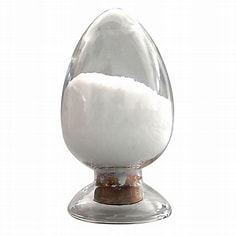Tin Dioxide SnO2 Ceramic Powder
Formula | SnO2 |
Synonyms | Tin Dioxide, Stannic Oxide, Tin(IV) oxide |
Appearance | White Powder |
Particle Size | -60 mesh or customize |
Melting Point | 1630℃ |
Density | 6.95 g/cm³ at 25°C |
Purity | 99.9% 3N (trace metals basis) |
CAS Number | 18282-10-5 |
Description of Tin Dioxide SnO2 Powder
Tin dioxide, also called SnO2 is a white, crystalline ceramic powder known for its high density, excellent electrical conductivity, and chemical stability. It is widely used in electronics, gas sensors, and catalytic converters due to its transparency, durability, and catalytic properties.
Princeton Powder is a wholesale supplier of Tin Dioxide (SnO2) ceramic powder, offering a wide range of products including ceramic plates, rods, pellets, crucibles, sputtering targets, and custom shapes. Our extensive manufacturing expertise ensures reliable, tailored solutions to effectively support your projects. Additional shapes are available upon request.
Chemical Composition
| Tin Dioxide Nanopowder / SnO2 Nanoparticles | |||||||||||
As | Cd | Pb | Ni | Bi | Zn | Sb | Al | Cu | Ag | Fe | In |
<2ppm | <2ppm | <32ppm | <5ppm | <9ppm | <5ppm | <7ppm | <2ppm | <20ppm | <2ppm | <9ppm | <8ppm |
Applications
High Electrical Conductivity: Useful for transparent conductive coatings and sensors.
Transparency: Ideal for optoelectronic applications.
Chemical Stability: Resistant to oxidation.
Catalytic Properties: Used in automotive catalytic converters.
Gas Sensing: Detects gases like CO and NO2.
Durability: High hardness and wear resistance.
Tin Dioxide (SnO2) Powder Reference
Vanadium and tantalum doping of tin dioxide: a theoretical study
- We focus on the investigation of vanadium (V) and tantalum (Ta) doped SnO2 both in the bulk and the surface. Here we focus on interstitial and substitutional doping aiming to leverage these modifications to enhance the density of states for energy application. These changes also have the potential to influence the optical properties of the material, such as absorption, and make SnO2 more versatile for photovoltaic and photocatalytic applications.
Tin oxide is a white or off-white powder produced by oxidizing molten high grade tin metal. It is typically quite pure, some manufacturers have grades up to 99.999% purity.
Tin(IV) oxide, also known as stannic oxide, is the inorganic compound with the formula SnO2. The mineral form of SnO2 is called cassiterite, and this is the main ore of tin.
Tin oxide has long been used to opacify glazes in oxidation (make transparents opaque) at all temperatures. Hand decorated tin glazed earthenware of the 1700/1800s is the most famous use of tin in glazes (delftware-England, faience-France, maiolica-Italy).

